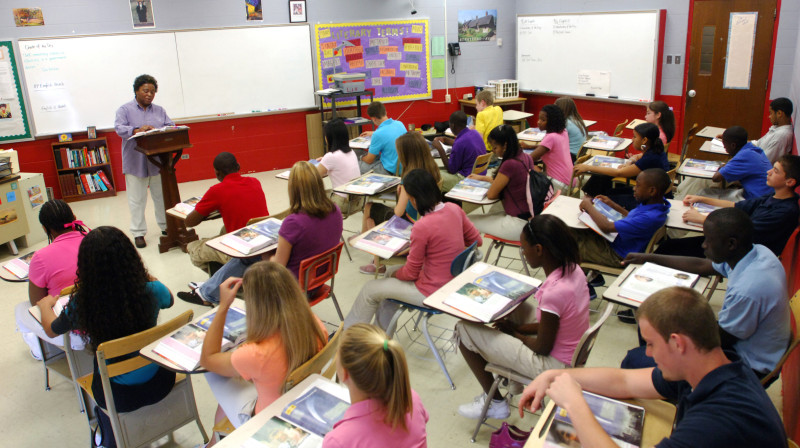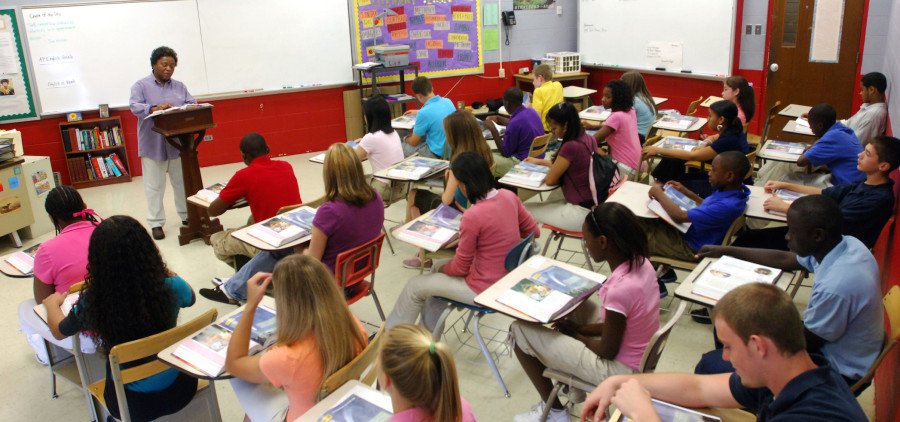 Being a teacher is an inherently moral endeavor—but do enough educators truly understand the moral value of their work? Richard D. Osguthorpe believes many do not, or at least not to the degree that is necessary. Osguthorpe, dean of the College of Education at Boise State University, would like to see more teachers who understand the moral value of what they do and teacher education programs that are prepared to show them how.
Being a teacher is an inherently moral endeavor—but do enough educators truly understand the moral value of their work? Richard D. Osguthorpe believes many do not, or at least not to the degree that is necessary. Osguthorpe, dean of the College of Education at Boise State University, would like to see more teachers who understand the moral value of what they do and teacher education programs that are prepared to show them how.
The former French teacher remembers feeling teaching’s moral tug in his first classroom at Timpview High School in Provo, Utah.
“I was amazed at how my day-to-day work went beyond just delivering content. I realized then, that in order to teach French well, I needed to develop relationships with students and show them that I cared about them as people. Many had concerns that related to their own lives and circumstances outside of the classroom,” he explains.
Osguthorpe agues that a strong understanding of the moral work of teaching can provide a buffer for educators, especially new ones, in a political climate that devalues the profession and a shield against the "test and punish" regime that causes many of them to flee the classroom.
Osguthorpe, who co-authored The Moral Work of Teaching and Teachers Education: Preparing and Supporting Practitioners with Matthew N. Sanger, spoke recently with NEA Today.
Help us better understand what you mean by the term “moral work of teaching."
Richard Osguthorpe: Matthew Sanger and I conceptualize the moral work of teaching as the aspects of teaching practice that are inherently connected to the moral domain—any issue that relates to what is good, right, virtuous, and caring in our personhood, actions, and relationships with others. These issues include those that are connected to the teacher being a morally good person, as well as to the teacher having an impact on the moral development of students.
Why focus now on the moral work of teaching?
RO: Perhaps the most powerful reason for focusing on the moral work of teaching in teacher education is that teaching is inherently moral—thus, the moral work of teaching cannot be avoided. Teacher education ought to attend to the commitments, values, and beliefs that teacher candidates bring with them into the teacher education classroom. Thus, helping teacher candidates understand these aspects of their future work are paramount to helping them realize the moral outcomes they anticipate experiencing in their future classrooms. Put another way, they gain access to what Doris Santoro calls the “moral rewards” of teaching—enabling them, as well as experienced teachers, to avoid the type of demoralization that too many teachers encounter.
Is it all up to teacher education programs?
RO: We can prepare teachers for this work by helping them understand that moral values infuses their work; helping them to engage in their practice in ways that align with what we call good, virtuous, and caring. If a teacher education program purports to prepare teacher candidates for the profession, and if it has a constructivist bent, then the moral work of teaching must be addressed in meaningful ways. But it must also continue, as a part of in-service teacher professional development. Seeking a deeper understanding of teaching practice and connecting that understanding to quality improvement will always be integral to the education of teachers.
What does or should that preparation entail and look like?
RO: That preparation could take on a lot of different forms. We discuss many of them in our book, “The Moral Work of Teaching and Teacher Education.” It might involve a commitment to caring that’s more aligned with a framework for justice. It might be something connected to pro-social development for students. It could be as simple as developing a classroom that is caring or having their sense of fairness, justice, and caring infuse the process of grading. Whether or not they can go into the classroom and impact the moral development of children, some would say, yes and some would say, no. But we can say that the school does have an impact. Having a teacher equipped to engage in that work is pretty important.
But whatever form that preparation takes, it should be purposeful, systematic, and thematically driven.
With many issues and challenges bombarding today’s education system, high-stakes testing among them, is the moral work of teaching getting overlooked?
RO: One argument for being concerned with the moral work of teaching rests on the assumption that teachers are not able to check their dispositions and moral character at the classroom door. The dispositions that they bring into the classroom infuse and inform all activities of teaching, from how teachers interact with students in the hallway to the way that they deliver instruction, grade papers, set rules for conduct, and on and on. Teachers simply cannot avoid the moral work of teaching; it is an inherent part of teaching. And I think that we would do well to attend to it in teacher education.
Your data gathering on the moral work of teaching has focused on student teachers at Boise State University. Were there any surprises and commonalities in survey responses when it came to the questions “can we teach children to be morally good?” and “how do you find morality?”
RO: Yes. One of the most striking commonalities was the way that our teacher candidates focused on their desires to be role models for their future students. We found that many chose teaching because they want to be a role model because they believed that some children don’t have one at home. That surprised us a little. Given that conviction, we were also surprised that they don’t know much about modeling and the social learning theory that supports it. As we probed further, we found that they also don’t have a great understanding of what modeling that behavior means.
We also saw some commonalities in the way that they described morality and moral development in strictly behavioral terms. Very few of our teacher candidates described morality and moral development in terms related to care theories or relational theories. We anticipated that more of them would suggest an affinity for practices that connected to an ethic of care, but hardly any of the teacher candidates mentioned caring in their responses.
What in today’s schools, classrooms, and teacher education programs make you encouraged or discouraged about your cause and research on teaching as moral work?
RO: We’re not fighting a battle to win the hearts of teachers and teacher educators that teaching is inherently moral. That encourages me. But the current practice in teaching and teacher education is moving us away from concentrating on the moral work of teaching. That’s because of the myopic focus on raising standardized test scores. I get frustrated. It feels like you’re trying to break down an open door—everyone recognizes that teaching is an inherently moral work, but it is increasingly harder to attend to it in the K-12 classroom because of the focus on raising test scores and an increasingly crowded teacher education curriculum.






